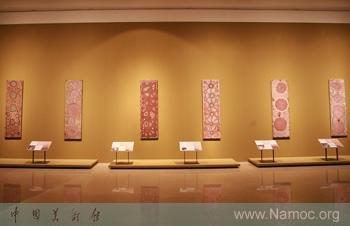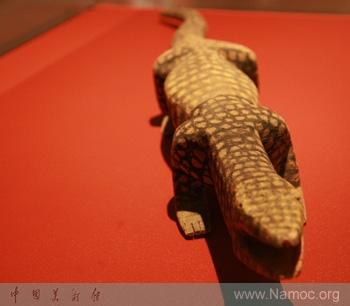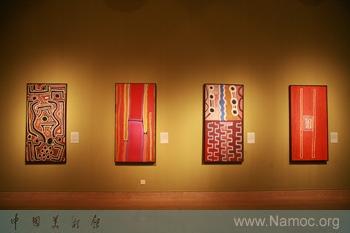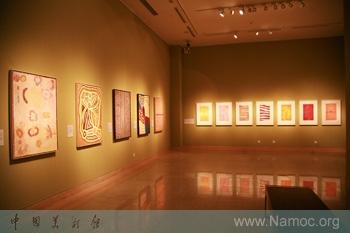In celebration of Year of Australian Culture, sponsored by the National Art Museum of China and various departments of the Australian government, an Aboriginal art exhibition from Australia is currently on display at Hall 13, 14, 15, 16 and 17 since June 10 until August 26, 2010. As new fruits of the artistic exchange between the two countries, the show is of special significance on its debut in china.
The Aboriginal people have lived in Australia for at least 50,000 years. There are more than 250 different cultural tribes with distinct languages. The Aboriginal art combining the practical and the artistic features, is an important cultural heritage and artistic treasure in the human being.
The Australian government is always encouraging the diversified cultures and making great efforts to protect the Aboriginal art in a bid to maintain and innovate the art. The exhibition introduces the works from Papunya in Central Australia and Balgo Hill in Western Australia. The show reflects the culture and the artistic style in the hinterland as a good opportunity for the audience to appreciate the local art.
In the 1970s and the early 1980s, some Aboriginal artist from the central and the western deserts created a number of paintings, which changed the understanding about the art. The Aboriginal art is an important stream in the country as well as a kind of artistic form worth worldwide attention. It is more important that the exhibition is hoped to reflect the life, the history and the art of the local people.



Papunya Paintings Aboriginal Art from Australian Deserts (1971-1981) (66 pieces of works by 36 artists)
In the late 1960s, a group of Aboriginal artist living in Papunya made brave attempts in terms of the color and the style, and presented the stories about their life, spirit, religion, outlook and ambition. Entering the global market, the works marked an evolution of the traditional artistic expression modes.
Dot-shaped pattern is a well-recognized typical Papunya style in Australia. Such designs reflecting different contents, boast profound cultural connotations. The exhibition is expected to help the audience trace the origin of the Papunya art.



Balgo Modern Australian Aboriginal art (26 pieces of works)
Balgo is a remote area located in Western Australia. The word is associated with various colors and enough vigor as well as an ancient and modern artistic mode.
In the early 1980s, the artists living in Balgo drew their stories on the canvas. The acrylic painting is hoped to help deepen our understanding about the traditional Aboriginal art. The Balgo art represents a kind of revelation as well as a human race and its religion and sprit.
China and Australia have shared great common in preserving cultural heritage of the human kind and maintaining the cultural diversity in the world. This exhibition reflects not only the Aboriginal art itself but also the activities by Australia to preserve cultural heritage and promote innovation based on traditions.
In exchange for this exhibition, the National Art Museum of China will launch an exhibition of Chinese contemporary art during the Year of China in Australia from 2011 to 2012. The exhibition is believed to deepen mutual understanding between the two peoples and promote mutual friendship.
Related News
Photos
More>>history
Traditions
- The first Invitation Exhibition of Comic Strip on Shelf is unveiled
- Twenty artists hold claborate-style paintings exhibition
- Li Zijian s oil painting exhibition is on debut in Beijing
- Female artist Sun Xiaoyun holds a calligraphic exhibition
- A retrospective exhibition of Cai Liang s works is on view





